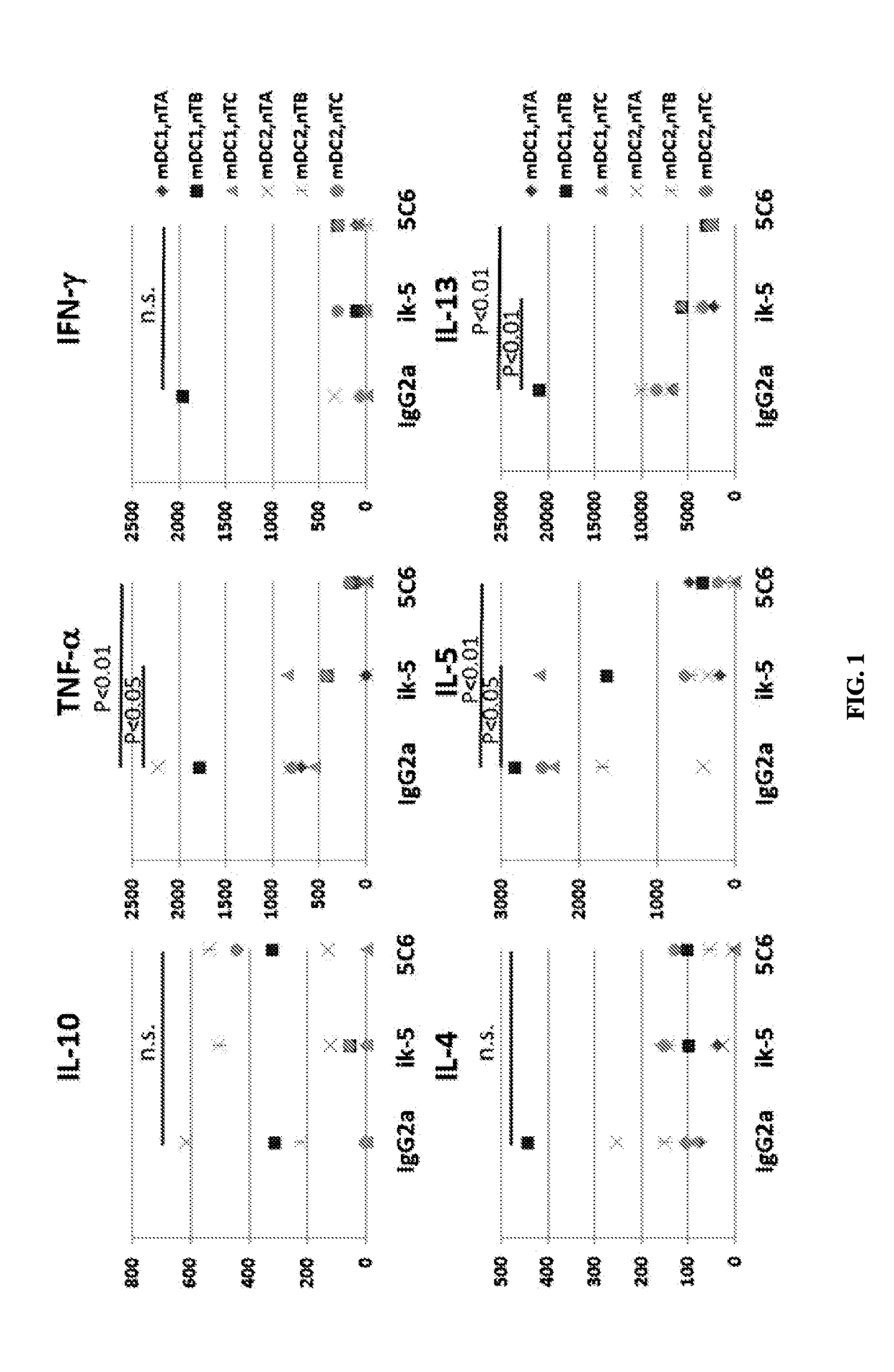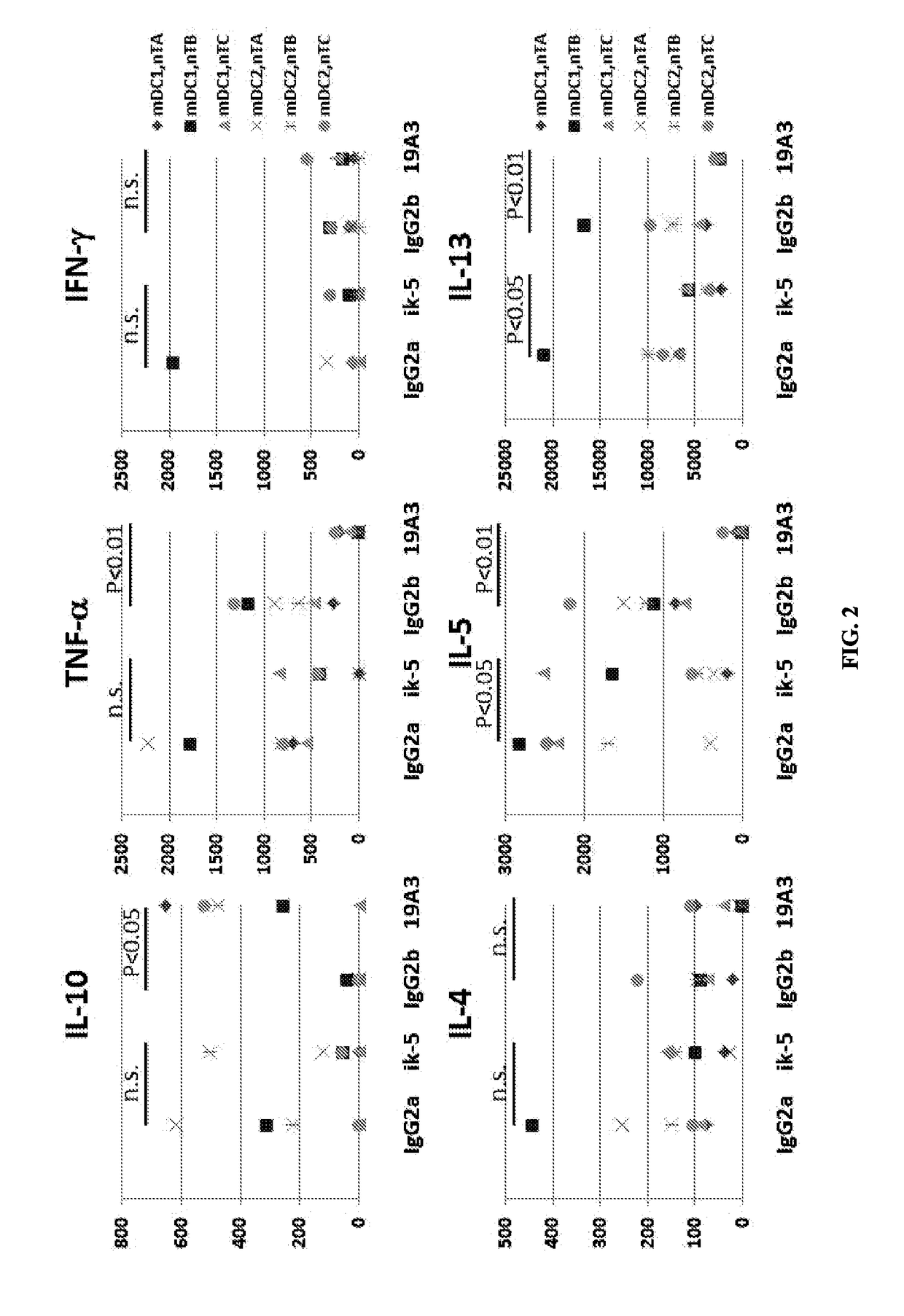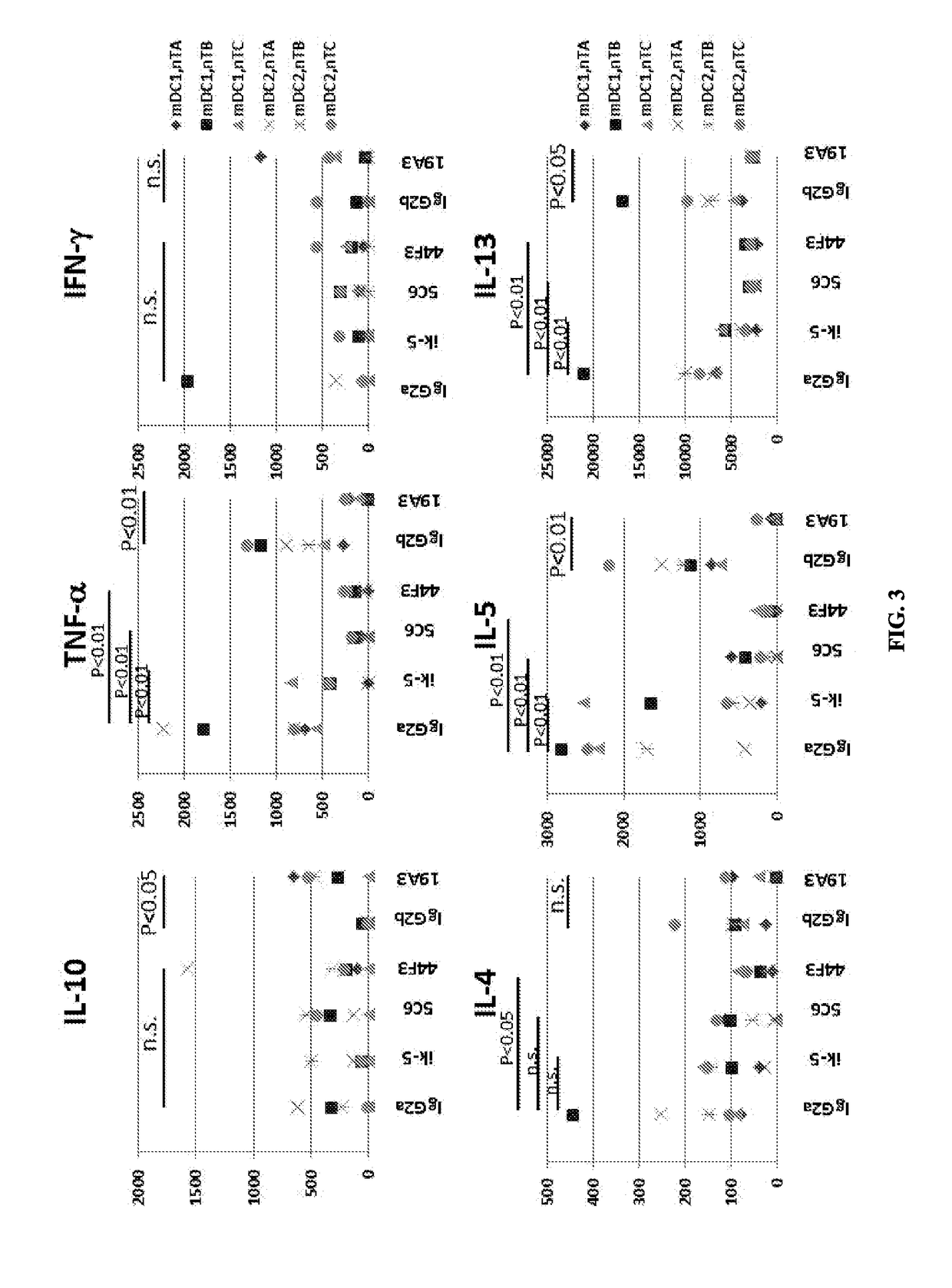Antagonistic Anti-ox40l antibodies and methods of their use
an anti-ox40l and anti-ox40l technology, applied in the field of medicine, can solve problems such as lethal consequences, and achieve the effects of reducing aberrant th2 cell responses, promoting the generation and function of regulatory t cells, and inhibiting the differentiation of inflammatory t cells
- Summary
- Abstract
- Description
- Claims
- Application Information
AI Technical Summary
Benefits of technology
Problems solved by technology
Method used
Image
Examples
example 1
ization of OX40L Antibodies
[0177]The OX40L antibodies, 5C6 (also labeled as AB104_105.5C6.3F9), 19A3 (also labeled as AB104_105.19A3.2C4), and 44F3 (also labeled as AB104_105.44F3.2F7) were tested for their ability to promote cytokine production by naïve T cells co-cultured with mDCs using the following assays. The effect of the OX40L antibodies on the proliferation and viability of mDC cultures were also tested using the assays described in this example.
[0178]The OX40L antibody clones 5C6, 19A3, and 44F3 were found to 1) recognize unique epitopes on human OX40L, 2) inhibit the differentiation of IL-10 low / TNFa high producing inflammatory Th2 primed by TSLP-mDCs, 3) inhibit the proliferation and the production of TNF-a, and promote IL-10 by CD4 T cells cultured with OX40L-transfected cell line. These results are shown in FIGS. 1-8.
[0179]TSLP-mDCs and Naïve CD4 T Cell Cocluture—Isolation and Culture of Blood Myeloid DCs (mDCs).
[0180]PBMCs were isolated form buffy coats or apheresis b...
example 2
nd Contributes to Human Lupus Pathogenesis by Promoting T Follicular Helper Response
[0189]Systemic lupus erythematosus (SLE) is a chronic systemic inflammatory autoimmune disease characterized by a breakdown of tolerance to nuclear antigens (Tsokos, 2011). SLE displays considerable heterogeneity in clinical manifestations and disease course. A more comprehensive understanding of SLE pathogenesis is long overdue; in the past 50 years, only one new drug has been approved for SLE treatment (Murphy et al., 2013; Stohl et al., 2012). Genome-wide association studies (GWAS) have identified many susceptibility loci for SLE, confirming that SLE patients display predisposing genetic factors (Cunninghame Graham et al., 2008; Delgado-Vega et al., 2009; Gateva et al., 2009; Han et al., 2009; International Consortium for Systemic Lupus Erythematosus et al., 2008). The interactions of the immune system with predisposing factors with environmental factors cause alterations in the functions of antig...
example 3
fficacy of Anti-OX40L in the Suppression of GVHD
[0244]Allograft survival with no adverse effects is an ultimate goal in transplantation. Over the past several decades, a large array of immunosuppressive agents have been developed and used for patients who underwent transplantation surgery. However, such immunosuppressive drugs do not guarantee the prevention of alloreaction over time in patients who receive organs, tissues, and hematopoietic stem cell (HPSC) transplantation. As a consequence, patients succumb to graft-versus-host disease (GVHD) as well as serious side effects from life-long immunosuppression.
[0245]Therefore, the development of novel therapeutic strategies that prevent GVHD without diminishing host immunity to microbial pathogens is of particular importance. Anti-OX40L antibodies did not interfere with human chimerism.
[0246]Anti-OX40L antibodies did not interfere with human chimerism (FIG. 26A-B). It was then tested whether anti-OX40L antibody (clone 19A3, IgG2b) tre...
PUM
| Property | Measurement | Unit |
|---|---|---|
| density | aaaaa | aaaaa |
| concentration | aaaaa | aaaaa |
| pH | aaaaa | aaaaa |
Abstract
Description
Claims
Application Information
 Login to View More
Login to View More - R&D
- Intellectual Property
- Life Sciences
- Materials
- Tech Scout
- Unparalleled Data Quality
- Higher Quality Content
- 60% Fewer Hallucinations
Browse by: Latest US Patents, China's latest patents, Technical Efficacy Thesaurus, Application Domain, Technology Topic, Popular Technical Reports.
© 2025 PatSnap. All rights reserved.Legal|Privacy policy|Modern Slavery Act Transparency Statement|Sitemap|About US| Contact US: help@patsnap.com



